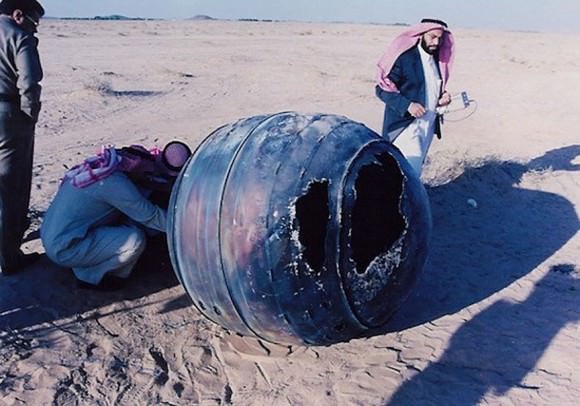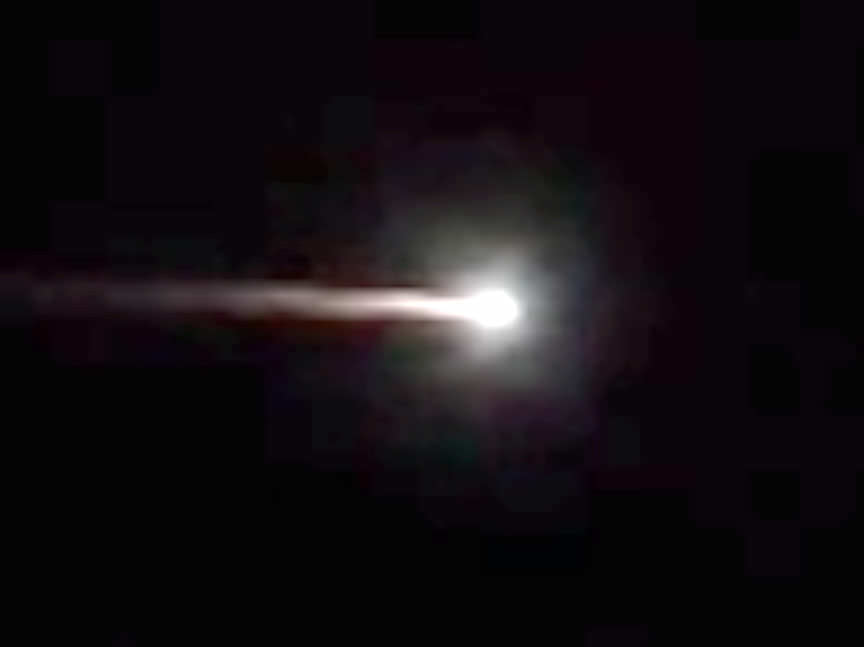“It first looked like a plane with fire coming out of the tail.” — Aaron O.
“I have never seen anything like it. Big, bright and moving gently across sky – slower than a plane, not falling at all but moving across.” — Shannon H.
“Viewed from cockpit of aircraft at 37,000′. Was visible for two or three minutes.” — Landy T.
Flaming plane? Incandescent visitor from the asteroid belt? As the these comments from the AMS Fireball Log attest, the brilliant and s-l-o-w fireball that seared the sky over southeastern Australia tonight was probably one of the most spectacular displays of re-entering space junk witnessed in recent years.
Ted Molczan, citizen satellite tracker and frequent contributor to the amateur satellite watchers SeeSat-L site, notes that the timing and appearance almost certainly point to the decay or de-orbiting of the Russian Soyuz 2-1B rocket booster that launched the meteorological satellite Meteor M2 on July 8.
Meteor over New South Wales. Look closely near the end and you’ll see it disintegrate into small pieces.
The magnificent man-made meteor, weighing some 4,400 pounds (2,000 kg), was seen from Melbourne to Sydney across the states of Victoria and New South Wales around 10 p.m. Hundreds of people were stopped in their tracks. Most noticed how slowly the fireball traveled and how long it continue to burn on the way down.
Spacecraft that reenter from either orbital decay or controlled entry usually break up at altitudes between 45-52 miles (84-72 km) traveling around 17,500 mph (28,000 km/hour) . Compression and friction from the ever-thickening air cause the craft, or in this case, the rocket booster, to slow down and heat up to flaming incandescence just like a hunk of space rock arriving from the asteroid belt. In both cases, we see a brilliant meteor, however manmade debris.

Occasional meteoroids break apart in the atmosphere and scatter meteorites just as pieces of occasional satellites, especially large, heavy craft, can survive the plunge and land intact – if a tad toasted. Whether anything remains of Russian rocket stage or where exactly it fell is still unknown. Here are a few more photos of successful space junk arrivals.

Reportedly, only one person has been struck by satellite debris. In 1997 Lottie Williams of Tulsa, Oklahoma was hit on the shoulder while walking by a small, twisted piece of metal weighing as much as a crushed soda can. It was traced back to the tank of a Delta II rocket that launched a satellite in 1996. I suppose it’s only a matter of time before someone else gets hit, but the odds aren’t great. More likely, you’ll see what alarmed and delighted so many southeastern Australians Thursday night: a grand show of disintegration.

